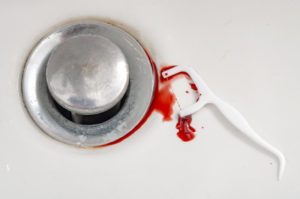
If your gums bleed while you’re brushing and flossing your teeth, it could be one of the first signs of gum disease. By altering your dental hygiene routine and visiting your dentist for a thorough checkup and cleaning, you may be able to reverse the signs and restore your oral health. Your dentist can also suggest gum disease therapy to stop the problem in its tracks. Read on to learn some of the early signs of this common disease and how you can prevent it from getting worse.
What is Gum Disease?
Gum disease, also referred to as periodontitis, is a common oral health problem that impacts one out of every two adults in the United States. Even though it’s so prevalent, it’s highly preventable with good at-home dental hygiene and professional preventive care.
Gum disease is caused by accumulation of harmful oral bacteria, plaque, and tartar. These substances work together to produce toxins in the mouth that can cause gum infection that results in inflammation, irritation, bleeding, and other serious symptoms when the issue is properly addressed. As one of the most common oral health problems in America, dentists thoroughly examine patients’ mouths for common signs of it during checkups and cleanings to address the problem before it’s able to cause permanent damage.
Signs of Gum Disease
Bleeding gums are one of the most common early signs of gum disease, and many people aren’t aware of it. People often think that bleeding while flossing is a common occurrence for everyone and that it’s nothing to be worried about. This thought process can actually harm your mouth by giving the disease a chance to advance into a more serious issue. Here are some additional signs of gum disease to keep an eye out for:
- Tender, swollen, and red gums.
- Bleeding while brushing, flossing, or even
eating hard foods. - Receding gums that pull away from the teeth and
make them appear longer. - Pockets of pus and bacteria located between
teeth and gums. - Oral sores.
- Chronic bad breath.
- Loose teeth.
- Permanent tooth loss.
At the first sight of any of these issues, contact your dentist immediately.
Treating Bleeding Gums Early
After a thorough examination, your dentist can determine whether your oral health problem can be treated with a revamped dental hygiene routine or gum
disease therapy. Depending on your needs and the severity of your gum disease, they may suggest one or a combination of the following treatments:
- Deep cleaning
- Antibiotic therapy
- Pocket irrigation
The sooner the problem is addressed, the less risk it poses to your oral and overall wellbeing. Good at-home dental hygiene paired with routine checkups and cleanings from your dentist can keep your gums and teeth healthy for years to come. With guidance from a professional, you’ll be able to prevent the beginning signs of gum disease so you don’t become another statistic.
About the Author
Dr. Ahir focuses on providing each of his patients with high-quality, individualized preventive dental care that stops small issues in their tracks, before they have a chance to become more serious. He has 12 years of dental experience and has completed an additional three-year residency focused on endodontics. He also regularly completes continuing education courses to stay up-to-date with the latest advancements in his field. For questions or to schedule a gum examination, visit Prime Dentistry’s website or call 940-514-0333.






